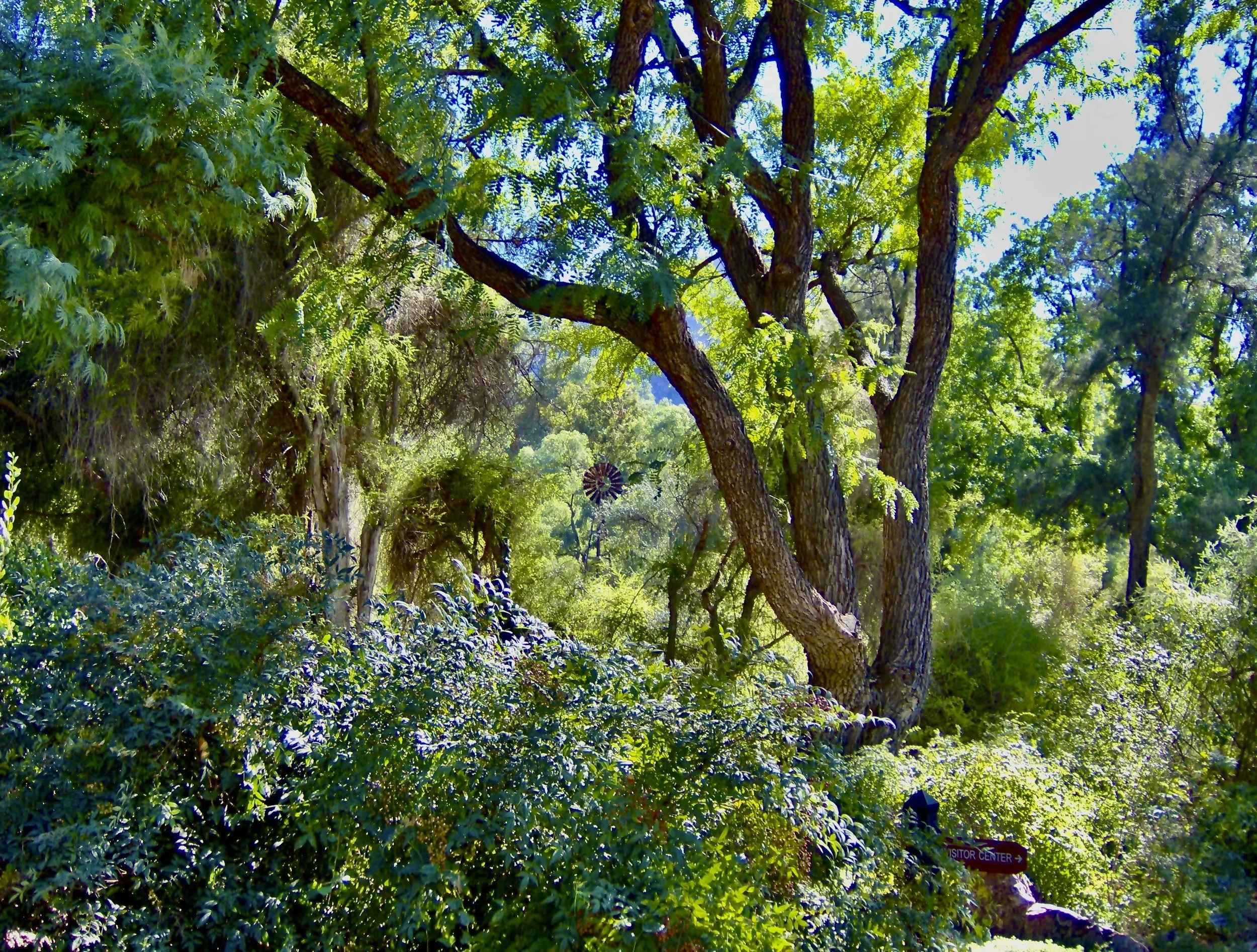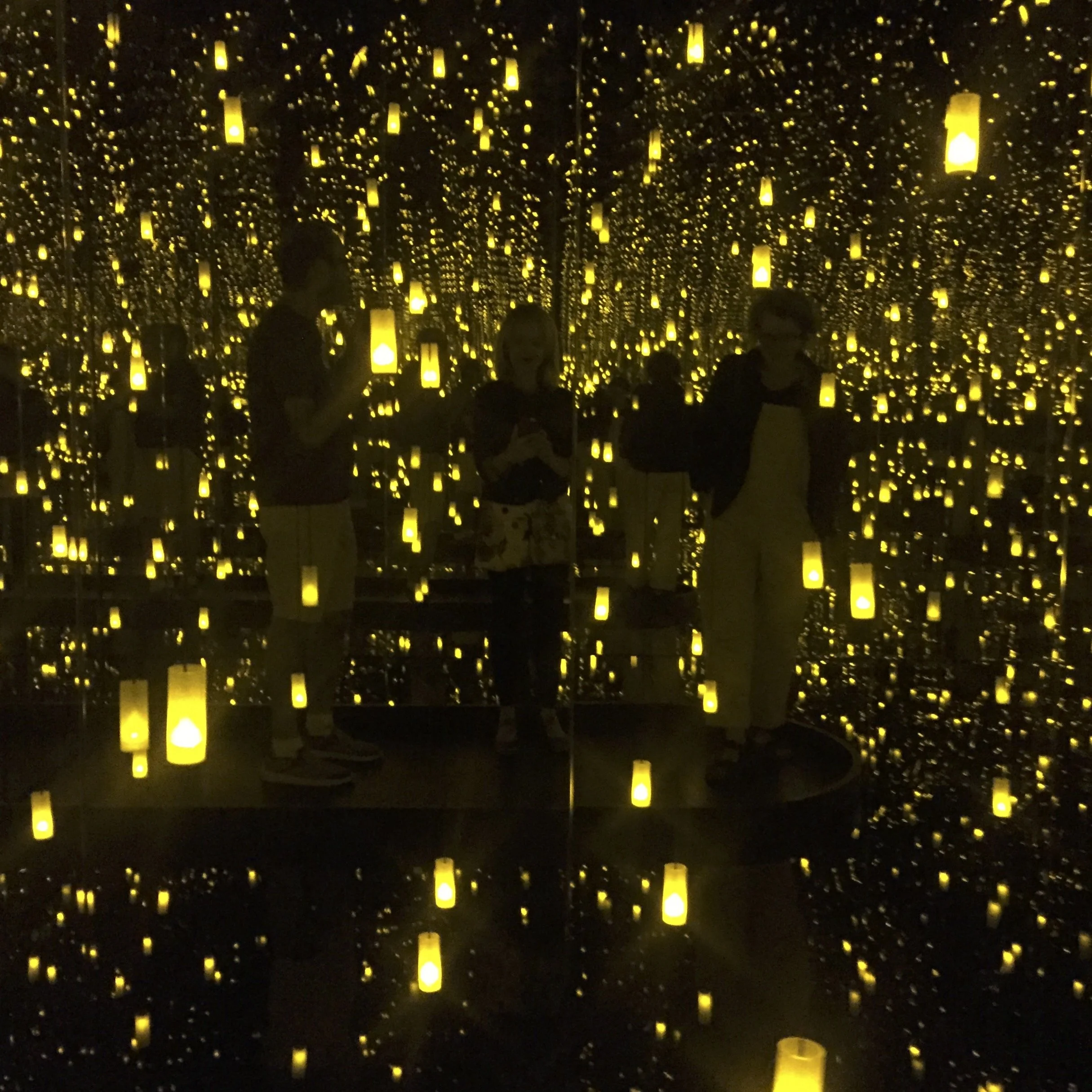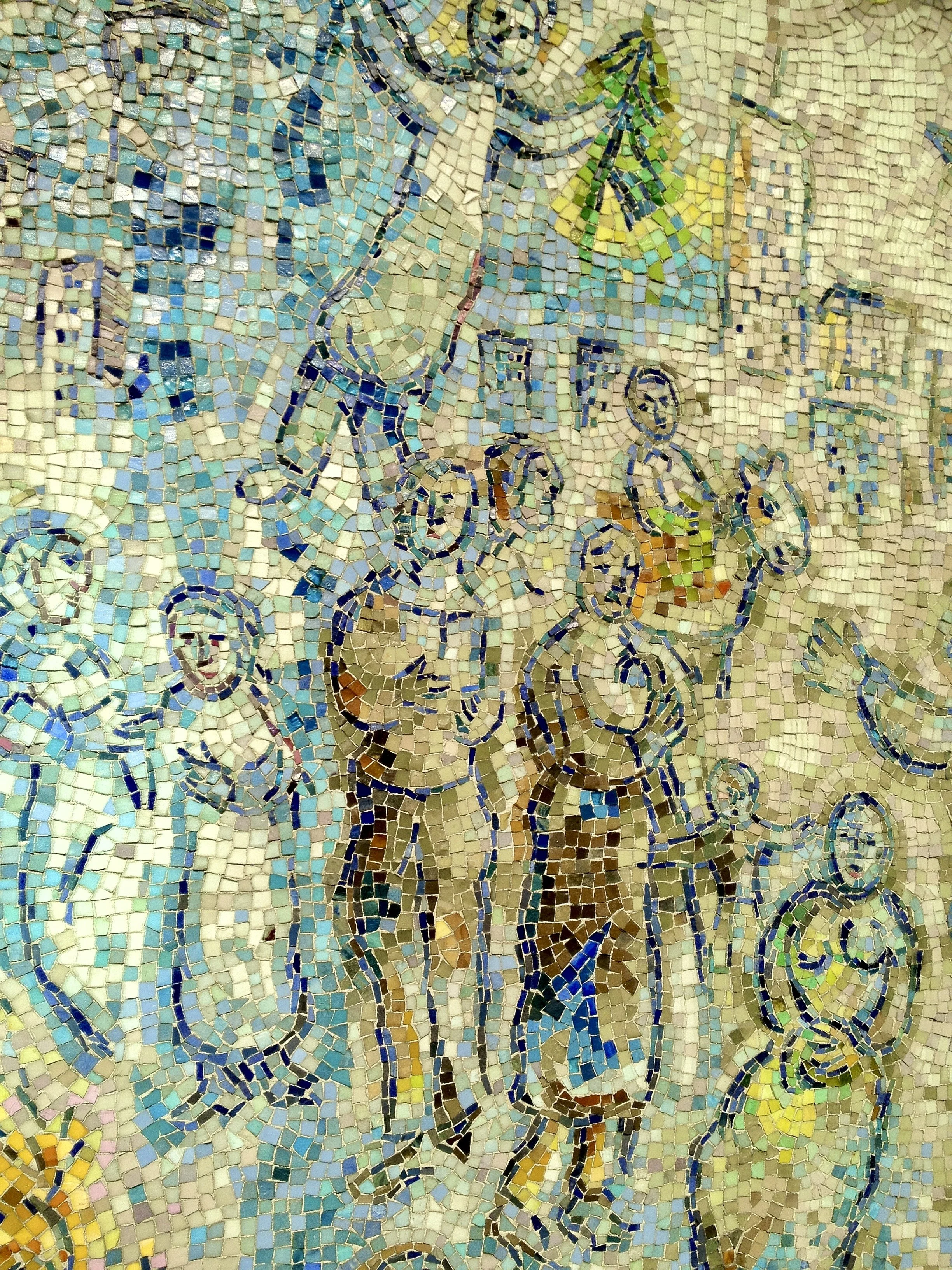Talk to the Stars, Listen to the Trees
Teilhard, Indigenous wisdom, and the living intelligence of our planet
Vibrant trees and plant life at the Boyce Thompson Arboretum in Arizona.
Reading time: About 10 minutes.
A Forest That Feels Alive
You know that feeling when you’re deep in the woods and, for a moment, it seems like the trees might be watching you? Not in a creepy Blair Witch way, but in a We have seen things you wouldn’t believe way.
I get that feeling a lot. Maybe because I’m prone to existential wonder. Maybe because I’m curious about the life that looks back at me in these places. Either way, it happens in the Muir Woods, where redwoods shoot so high into the sky that you can’t even see where they end. It happens in the Hoh Rainforest, where moss covers every surface like nature’s weighted blanket, and the air smells like life itself. It even happens in the Sonoran Desert of Arizona, where the trees aren’t as towering but still seem to be whispering among themselves.
It’s not just the size of the trees (though, yes, standing next to a tree that’s been alive since before Shakespeare was born does things to your sense of perspective). It’s something else. A presence. A knowing. A feeling that the land is not merely existing but participating—holding history, standing as witness.
Enter Pierre Teilhard de Chardin.
Teilhard was a French priest and paleontologist, and he had a big idea: that the Earth wasn’t simply a rock with life on it but a living, evolving entity. More than that, he believed we were all part of a grand cosmic process, moving toward something greater, something he called the Omega Point. This, he said, is the ultimate destination of evolution—a state where consciousness and complexity reach their peak, and humanity reunites with the divine in a sort of cosmic awakening.
While Teilhard didn’t frame it in these terms, one could see echoes of the Garden of Eden here—not as a place we were cast out of, but as a deeper state of harmony that we are evolving back into through awareness and interconnectedness. Unlike the traditional Eden, which was lost through disobedience, Teilhard’s vision was not about regressing to a past paradise but about moving forward into something greater—a New Eden, where humanity consciously embraces its place in the vast, living web of existence. In a way, it could be seen as a return, a rejoining with the greater whole that the rest of existence has never forgotten.
Teilhard’s Vision of Gaia (That Wasn’t New At All)
Teilhard’s whole deal was that evolution wasn’t only about species—it was about the entire planet moving toward higher consciousness. He saw human thought, biology, and spirituality as connected in one big, unfolding process.
Some people thought his ideas were too mystical. Others dismissed them as a little too woo-woo for a scientist-priest combo. But if Teilhard were alive today, he might feel very smug about the Gaia Hypothesis, first proposed in the 1970s by scientists James Lovelock and Lynn Margulis.
The Gaia Hypothesis suggests that Earth functions like a living organism, regulating itself to sustain life. If you’ve seen the movie Avatar, you’ve seen a version of Gaia in action—the interconnected web of life on Pandora, where every creature, tree, and neural network functions as part of a self-sustaining whole.
On our own planet, however, the scientific community initially treated this hypothesis like someone had suggested the moon was made of cheese. Over time, more research has emerged showing how Earth’s systems—climate, oceans, forests—adjust and balance in ways that seem almost intentional.
Teilhard’s vision wasn’t far off from what the Gaia Hypothesis suggests. He wasn’t exactly right, but he wasn’t exactly wrong either. The Earth is alive. It is self-regulating. So, sure, Teilhard was onto something. At the same time, he did that thing where a European guy “discovers” an idea that Indigenous cultures have been talking about for centuries and says it’s brand new. Indigenous cultures never needed a scientific hypothesis to tell anyone about interconnection.
“Science Discovers Things We Already Knew”: A Recurring Theme
Long before Teilhard or Lovelock and Margulis, Indigenous traditions saw the Earth as a living being full of relationships, responsibilities, and intelligence.
Take, for example, the Duwamish story of North Wind and South Wind.
It tells of a time when North Wind covered the land in ice and snow, blocking the Duwamish River with a frozen dam. This trapped the salmon, cutting off a vital food source for the people living upstream.
In this story, wind isn’t just weather—it’s a force with agency, consequences, and relationships. The river isn’t just a body of water—it’s part of a living system that people depend on.
And here’s the kicker: this isn’t just a nice myth—it’s a form of ecological knowledge passed through generations. It encodes an understanding of balance and consequence, recognizing that land, water, and life are in constant relationship. To the Duwamish, these aren’t separate ‘things’ but participants in a larger, intelligent system.
The Duwamish people didn’t need Western science to tell them that disrupting natural cycles has consequences. They already knew. Teilhard eventually figured it out. Lovelock and Margulis put it into a hypothesis. And today’s climate scientists are, once again, confirming what Indigenous knowledge has said all along: everything is connected.
Evolution Is Not a Solo Sport
There’s a common idea that evolution is a brutal contest where only the strongest survive—a very Wall Street Wolf take on nature. But that’s an oversimplification. Evolution isn’t just about brute strength and dominance. It’s actually more about adaptability, cooperation, and resilience.
You don’t have to look far to see this in action. Crows in cities have learned to drop walnuts onto roads so cars will crack them open. Birds shift their migration routes. Some fungi can now digest industrial waste, which is both horrifying and kind of amazing. Fungi are out here evolving to eat pollution while billionaires are trying to escape to Mars.
And honestly? Seems to me the fungi are winning the intelligence war.
But adaptation isn’t guaranteed. Not everything evolves fast enough to survive.
Species go extinct. Rivers run dry. Forests disappear. And despite our technological cleverness, humans are not immune to extinction. When water dries up, and we can’t grow food because the bees have all died, it puts our existence in peril. The Earth will go on to do what it must to regulate the life that lives on it, with or without us.
Teilhard liked to think evolution was a straight path toward something better—an upward march of progress. But nature doesn’t work that way. Evolution isn’t a solo mission. It’s about relationships.
Trees in a forest don’t thrive alone—they share nutrients through underground fungal networks. Wolves in Yellowstone reshaped the entire ecosystem merely by existing in the right place. Everything in nature is interconnected.
And humans? We depend on those relationships, too.
The Earth isn’t a resource. It’s a relationship.
Finding Gaia in the City
It’s easy to feel connected to the Earth in a place like the Muir Woods. Ancient trees! Misty air! The undeniable feeling that a Tolkien elf could appear at any moment! But what about a city where human activity is woven into the landscape as much as the rivers and trees?
People tend to think of cities as anti-nature—concrete, traffic, overpriced coffee. And it’s true—much of human expansion has ignored the rhythms of the land, reshaping waterways, clear-cutting forests, dismissing the ecosystems they replaced. But cities teem with life. Gaia continually evolves.
For the last three Thanksgivings, I’ve taken an intentional walk through Seattle, heading down to the waterfront. I do this to connect not only with people but with the land itself.
I think about how this place has changed as people interact with the land. The land expanding into the waterways, the trees breaking through concrete, the patterns of human movement—all of it part of an ongoing relationship between humanity and the Earth. I think about the Indigenous people who lived here long before it was called Seattle—and who are still here despite everything. I listen to the seagulls and crows, knowing they were here then, just as they are now. Their voices carry history.
Even in a city, perhaps especially in a city, Gaia evolves. Humans are part of that process—not separate from nature, but shaping it and being shaped by it in return. The question isn’t whether we’re part of the Earth’s evolution but what role we choose to play.
An Invitation to the Future
Teilhard dreamed of a future where humanity and the Earth evolved together. But evolution isn’t passive. It’s something you do.
Gaia isn’t simply a hypothesis. It’s an invitation.
Like any invitation, we have a choice: we can show up or ignore it.
But showing up doesn’t mean selling everything, moving to the woods, and foraging for mushrooms (unless that’s your thing). It can be small, daily choices—ones that remind us that we are in a relationship with the world, not just passing through it.
🌱 Pay attention to what’s around you. Walk through your city, your neighborhood, your local park—even your local grocery store parking lot—and actually look. What birds do you see? What trees? What little green sprigs have defied the concrete system designed to suppress it? Every place has an ecological story—learn it.
📚 Read Indigenous voices, not just Western science. Books like Braiding Sweetgrass by Robin Wall Kimmerer offer perspectives on how to live in harmony with the land in ways that Teilhard (and many of us) have overlooked.
☀️ Feel the motion of the Earth beneath you. At dusk, go outside and watch the moon rise over the horizon. Imagine the solar system’s vast distances—Earth rolling slowly away from the Sun, Venus and Mars moving in their own orbits, everything in motion together. If you sit with it long enough, you might feel the Earth’s slow, steady turn beneath you, like the barely perceptible hum of a spinning top. In that moment, you might realize that you are part of something far larger than yourself.*
🍎 Change your relationship with what sustains you. Every bite of food is a connection to the planet. The rain that fell, the soil that nourished it, the hands that harvested it—all part of the same vast system. Consider where your food actually comes from. Labels indicate what country they were harvested in. Imagine the land there, the hands of those who picked your tomatoes and carrots. Visiting a farmers’ market, growing a single herb on your windowsill, or learning what’s edible in your local environment are all ways to reconnect with the land.
🌎 Advocate for policies that recognize the Earth as a living system. Whether it’s supporting Indigenous land rights through the Native American Rights Fund, pushing your city council to expand local green spaces and save trees from being felled by developers, or calling your congressional representatives to demand better climate policies, the way we govern our relationship with nature matters.
🎭 Engage with art that expands your perspective. Watch films, attend exhibits, read poetry (I especially love Mary Oliver’s poetry), and seek out artists whose work explores the interconnectedness of life. Rebecca Rutstein and Richard McVetis are two such artists. Art shapes culture, and culture shapes what we protect. For additional ideas, reach out to your local librarian.
The universe reveals itself in ordinary things, but only if we look. A vine curling toward the light. The rhythm of waves against the shore. A tree breaking through concrete.
The next time you sit down to eat, hold a green bean (or any other food) in your hand. It contains the sun. It contains the rain. It contains the earth. In touching it, you are touching the cosmos.
Gaia is speaking. The question is whether we will listen.
*I borrowed this imagery from Brian Swimme's book The Hidden Heart of the Cosmos.




